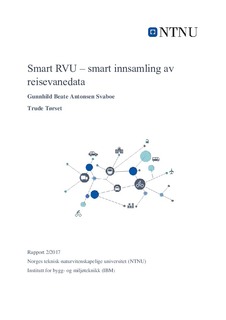| dc.description.abstract | Participation in travel surveys has declined during the last decades, and one of the goals in this project was to figure out why and what could be done to overcome this problem. As students are available to us, being a university, and because students are difficult to recruit in ordinary surveys, we arranged focus groups to discuss barriers against participation, and which incentives would be effective to increase the response rate.
Results from the focus group interviews showed that some of the students have developed strategies to avoid participation and have a negative attitude towards phone surveys in general. It is important to show quality in design, language and information up front about purpose and benefit of the surveys to motivate the students to participate. They also expect some reward, which have become a more common practice in Norwegian surveys. Most of the students would be willing to use the mobile app as long as a serious institution controlled the data, and as long as marketing use was outside the scope, and that the mobile app would demand little effort by them. To improve the general impression of surveys, they wanted information about results from the survey, and personal statistics.
We considered several mobile apps before we decided to test TRavelVU made by Trivector in Sweden. We recruited 33 respondents who installed the mobile app and used it for two weeks. The intention was to find out if the mobile app was suited as a tool for travel surveys in Norway. The participants was encouraged to give feedback about user friendliness, time effort and other experiences and impressions. In addition, we analyzed the data from the survey to study the usability for our purpose.
The main findings were that the mobile app works as expected. Some of the participants had some technical challenges, mostly regarding battery capacity, but most of these were dealt with. The collected data gave information about the respondents, precise travel information and mapped the trips accurately. Surprisingly the test also showed a higher trip frequency than reported in the national survey indicating under reporting of trips in the latter.
The newest national travel survey has a low response rate and might the sample might thus not be representative. It was not possible to do a sample selection test, as the data about the non-respondents were unavailable. However, segments from the national travel survey from 2013 and 2014 were compared with population statistics from Statistics Norway.
The comparison showed that the most resourceful people in the population, regarding education, gender balance and income, were over represented in the survey. This was most prevalent in education levels.
A small survey was carried out to see if mobile apps would be preferred over traditional phone interviews in travel surveys. The respondents answered 6 questions, with the last question being would you prefer A) to be interviewed for 20 minutes or B) to be tracked for 7 days using a mobile app. The survey had only 259 respondents and is thus not representative for the whole population, but three out of four stated that they would prefer the mobile app, indicating that this is acceptable to many people. | nb_NO |
